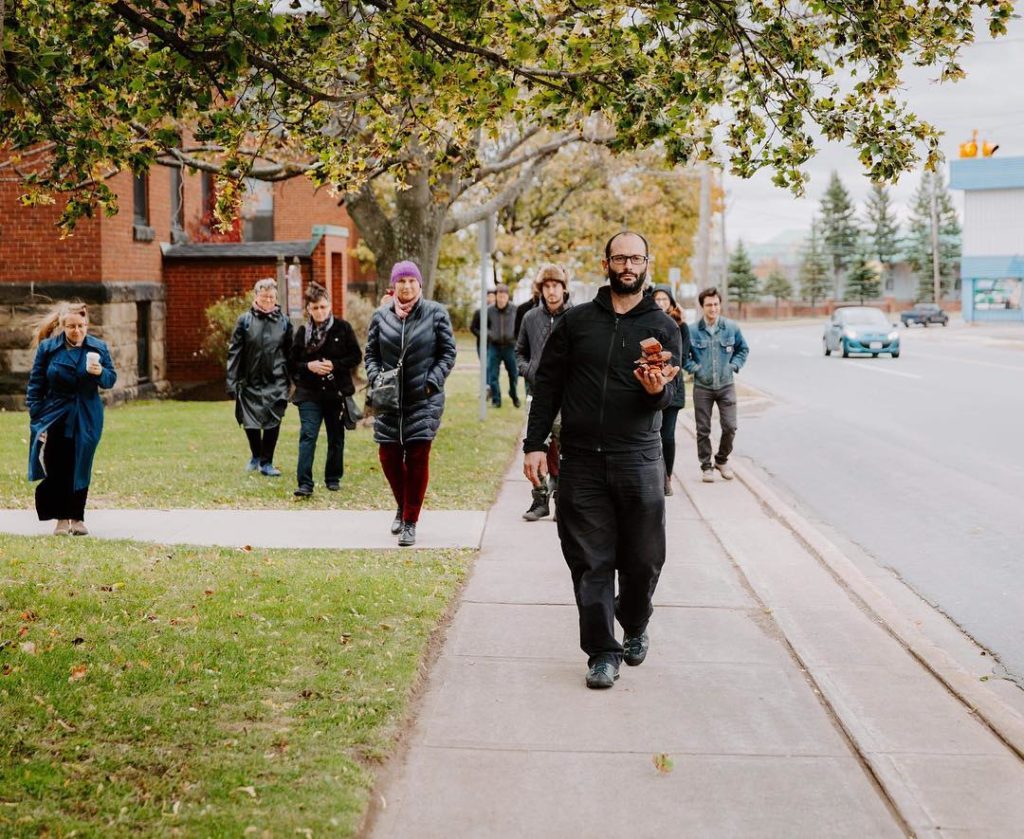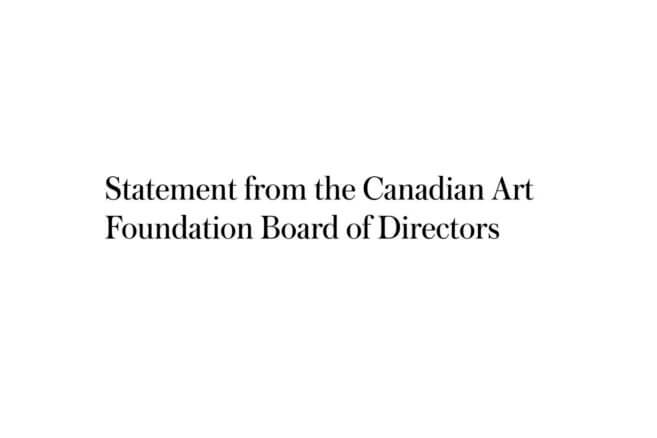Today, 13 new pieces of public art will be unveiled in Moncton. All are by contemporary artists actively working today—but each of these artworks addresses the past of cultural production in this region, too.
Called Images Rémanentes—or “Afterimage”—the project includes artworks by Mario Doucette, Jacinthe Loranger and Maryse Arseneault, among others. Co-curators Michelle Drapeau and Elise Anne LaPlante received a Canada Council New Chapter grant, as well as funding from the provincial and municipal governments, to bring Images Rémanentes to fruition.
“As people visit this new public art circuit, they will be able to discover new art projects in the region—but also learn about the history of art in the region,” co-curator Michelle Drapeau tells Canadian Art. The artworks include prints, paintings, sculptures, performance and mixed media works installed both indoors and out.
For instance, Alisa Arsenault’s project À cheval is a series of serigraphs on Plexiglas at Robinson Court and Aberdeen Cultural Centre. The serigraphs inspired by the artistic relationship of Yvon Gallant and Nancy Morin, who shared a studio at the cultural centre for many years, influenced each other’s style, and also shaped the arts scene at large.
Each location is important to the meaning of the artworks. They spread from the University of Moncton to the Dr-Georges-L.-Dumont University Hospital and beyond. Imago artist-run print studios, Galerie d’art Louise-et-Reuben Cohen and Galerie Sans Nom were also important partners in the project.
“We did a lot of research about art in the Acadian communities of Southeastern New Brunswick to start with,” says Drapeau. “Then we created a long list of possible subjects and put it in our open call.”
Jared Betts’s Nymphalidae Phosphorescence is a series of images installed outdoors by the Petitcodiac Riverside Trail. Through this installation, Betts pays homage to the controversial 1995 public art project Night Glow Highway, which was created by seven local artists and also installed along the Petitcodiac—but which met with complaints from some residents because of its erotic content. Eventually, five images from Night Glow Highway were seized by police; two more were vandalized and one was stolen. In Nymphalidae Phosphorescence, Betts references the work of Paul Édouard Bourque, George Blanchette and Marc Cyr, all of whom were in the Night Glow Highway project.
“Some of the artists involved also work in performance, and they figured out ways to have a trace of their project that is permanent,” says LaPlante. For example, Mathieu Léger wanted to speak to the impact of Moncton’s built environment on its artists, so each year for 10 years, he will gather brick fragments from a different city building of cultural significance, and he will add these fragments to a display case at Resurgo Place. When the 10 years are up, the artist will combine all the salvaged brick fragments to create a series of 10 black bricks that will be reintegrated into the original building facades. Notes LaPlante, “It was important to us that the works in Images Remanentes represent what contemporary artists do in 2018.”
And it’s not just presences in the local art canon that are noted, but absences, too. Dominik Robichaud’s Birth Labyrinth I (prenatal) and Birth Labyrinth II (postpartum), installed at a local medical school and an obstetrics clinic, respectively, play off of the fact that while Moncton has a rich legacy of alternative art spaces, few of those spaces ever privileged maternity as a subject. (These pieces may be particularly resonant for some given New Brunswick’s long reputation as a place where abortion and other reproductive health services are difficult to access.)
“All of the works in Images Rémanentes have some kind of relationship to the space in which they are installed,” says Drapeau. “It was important for us as curators that both contemporary and historical art in Moncton be presented in these projects.”
Images Rémanentes launches today with a guided bus tour starting at 4 p.m. from Aberdeen Cultural Centre, and a reception starting at 7 p.m. at the centre as well. There will also be another bus tour leaving 11 a.m. on December 20. More information on all the artworks is available at www.imagesremanentes.com.

 Artist Mathieu Léger transports brick fragments from Moncton's mother house of the nuns of Notre-Dame-Du-Sacré-Coeur to Resurgo Place as part of his project for Images Rémanentes. Photo: Annie-France Noel.
Artist Mathieu Léger transports brick fragments from Moncton's mother house of the nuns of Notre-Dame-Du-Sacré-Coeur to Resurgo Place as part of his project for Images Rémanentes. Photo: Annie-France Noel.




